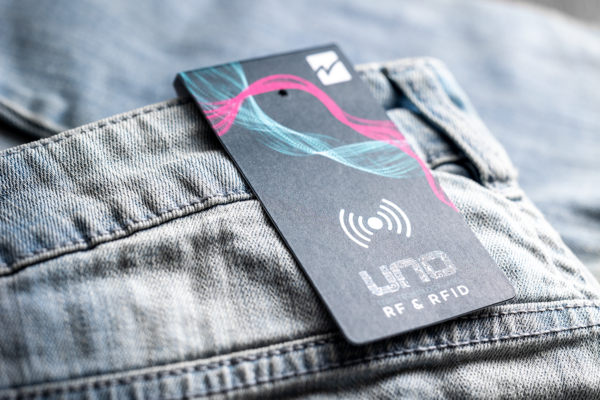The time for discussion is over; 2024 is the year for seamless shopper experiences. Just like last year was. And the year before that. ‘Seamless experience’ is a term the retail sector has been throwing about for years. On the surface, it might seem like a pipe dream or an unrealistic goal. And we’re here to tell you…it’s not. Our experts explain what 'seamless' means to consumers, the simple tech behind it, and why 2024 really is the best time to start!
Meeting customer expectations in 2024
Today's consumers can get anything they want delivered the next day and complete the transaction in the time it takes to double-tap a button. They've got cashless digital wallets, apps to order their coffee for queue-free pickup, and tailored recommendations, discounts, and experiences delivered directly to their smartphones. When shopping can be this easy and this personalized, retailers who don’t measure up quickly fall by the wayside.
Bells and whistles aside, there are two main areas to focus on within the ‘seamless experience’, and they both use the same tech…
Self-checkout
A recent article by Forbes found that 46 percent of survey respondents prefer to shop in a physical store but want to do so at their own pace — 80 percent liked the idea of a non-traditional checkout. Waiting in line is so 2019.
With brands like Zara and Uniqlo utterly smashing the self-checkout game, customers are starting to expect the same seamless service from other high-street retailers. In fact, 77 percent of shoppers say they’re more willing to shop with retailers who have scan-and-go payment options.
Omnichannel retail
The omnichannel retail model is another sought-after consumer expectation. Data collected by McKinsey shows that between 60 and 70 percent of consumers expect a seamless ‘omnichannel’ experience. This basically means they want to hop between smartphone, desktop, app, and shop floor in one seamless transaction.
Omnichannel customers want to see a garment or accessory, locate it in a nearby store, and be able to pick it up in mere hours. Unfortunately, many retailers don’t have the inventory accuracy to support omnichannel or a reliable buy-online-pick-up-in-store (BOPIS) service.
Omnichannel retail is also the secret to delivering those sweet, sweet, personalized discounts and offers directly to customers. The customer's shopping habits and purchase history are linked across all touchpoints, so you’ve got the data you need to tailor your marketing approach.
RFID technology: the (worst-kept?) secret to ‘seamless’
Are you starting to feel intimidated? Don't worry, friend. There's a solution, and it could be as simple as a sticker on your hang tags.
Radio-frequency identification (RFID) isn't new to retail, but brands are starting to use the clever tech in new and more innovative ways to unlock seamless experiences for their customers.
RFID is a wireless communication technology that can be integrated into your hang tags or embedded into your garments. One scan of an RFID inlay reveals information unique to that garment, including data like location, purchase history, origin, and more.
Retailers have been successfully using RFID technology to bring their inventory accuracy up to 99% (without time-consuming manual counts), to improve display compliance, and to order and allocate stock more efficiently. It's a total game-changer, and — best of all — it's so versatile that you can flex the tech to work for you.

Read: why RFID is fundamental to the future of retail
3 ‘seamless shopping’ roadblocks and how to smash them
Our RFID Checkpoint crew has been working with the tech for decades, designing new solutions to meet super-specific customer use cases. At the risk of sliding (seamlessly?) into a humblebrag, we've got tagging options galore and a ton of RFID inlays for different use cases designed and manufactured in-house. And that's before mentioning our range of hardware solutions for EAS and open, integrated software to manage all the lovely data your RFID inlays generate for your business.
Long story short, we can help you on every stage of your RFID journey, from concept to rollout, and even train your people on the new tech. There isn't a roadblock we haven't smashed — here are a few common concerns and how we’ll help you casually swat them away as you embrace futureproof seamlessness.
- I’m worried tags will fall off and ruin my inventory accuracy
RFID doesn't have to be a sticker or a hang tag; you can opt to embed the inlays into the garments themselves. Pocket tags and care labels are two of the most discreet RFID solutions. They involve tucking the inlay into a seam or label so it's harder to lose but still easy for checkout equipment to scan without a line of sight.
- Will self-checkout increase shrinkage rates in my stores?
Not with the right EAS hardware and RFID inlay at your back! Embed our RF and RFID dual technology inlays into your garments and use them in tandem with our super-effective modular SFERO loss prevention system. It leaves your store clean, modern, and accessible but still gives you a detection capability of up to 95 percent. Nothing leaves the store without your say-so!
- I think I need better self-checkout hardware
Not a problem! We’ve got a solid partnership with Partner Tech, who can hook you up with everything you need for the ultimate, seamless self-checkout experience. Team it with our open ItemOptix™ for Retail software and you’re good to go. No sweat!
2024 is your time to move forward and embrace the future of retail. Are you ready to take the first steps? Contact our team and hit us with your questions, or visit the Checkpoint blog to learn more about RFID. We’ve helped some of the world’s biggest brands move towards seamless customer experiences, and we’ll do the same for you.
